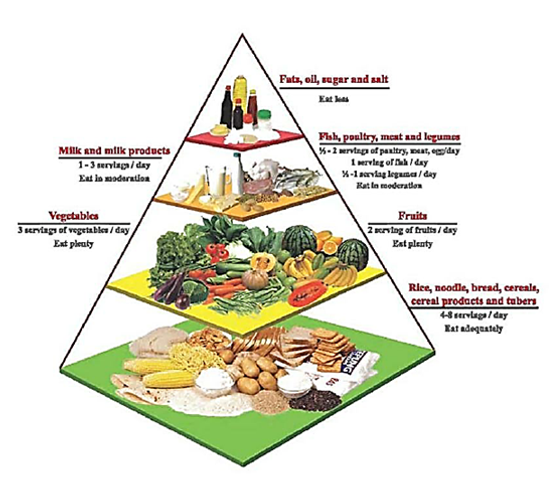Get Our Latest Updates
Alpro Group Head Office & Distribution Centre
Unit V1-A, Lot 45880, Jalan Techvalley 3/2, Sendayan Techvalley, 71950 Bandar Sri Sendayan, Negeri Sembilan.
health
By Alpro Pharmacy
February 14, 2018
Eat plenty of fruits and vegetables every day.

*Good sources of fiber, vitamins and minerals and phytochemical, which help strengthen the immunity.
*Eat plenty of fruits and vegetables every day. Beneficial in health especially in preventing several chronic diseases such as diabetes mellitus type 2, cardiovascular diseases and certain cancers.
*Eat a variety of vegetables and fruits every day.
*Choose fresh fruits. Fruit juices may replace not more than one serving of fruit.
Key recommendation 1
Eat a variety of fruits and vegetables every day.
How to achieve:
1. Eat fresh fruits and vegetables.
2. Choose dark green leafy vegetables every day.
3. Eat different colored fruits and vegetables.
4. Choose a variety of fruits and vegetables as snacks such as bananas, guava, cucumber slices, tomatoes or carrot sticks.
5. If you choose dried fruits, select unsweetened or unsalted variety.
6. If you choose canned fruits, serve without syrup.
7. Prepare fresh fruit and vegetable juices without added sugar and preservatives.
8. Choose fresh, frozen or canned vegetables and serve as a dish, salad, ulam or as an ingredient in a dish.
Key recommendation 2
Eat adequate amount of fruits and vegetables every day.
How to achieve:
1. For children below 7 years old, give 2 servings of vegetables and 2 servings of fruit daily.
2. For children and adolescents aged 7 and up to 18 years, eat at least 3 servings of vegetables and 2 servings of fruits daily.
3. Choose fresh fruits over fruit juices. Fruit juices should not replace more than 1 serving of fruit.
4. Serve fruits and vegetables creatively to encourage consumption.
Choose fruits from these different fruit categories:
*pome fruits such as apples and pears
*citrus fruit such as oranges, mandarins and grapefruit
*stone fruit such as apricots, cherries, peaches, nectarines and plums
*tropical fruit such as bananas, paw paw, mangoes, pineapple and melons
*berries
*Other fruits such as grapes and passionfruit.
Diabetes and Fruit: The Glycemic Index
Fruit is an important part of a healthy diabetes-friendly diet. It contain source of carbohydrates that may affect your blood sugar level. People need to know each fruit’s glycemic index ranking and appropriate serving size.
The glycemic index (GI) is a numerical rating assigned to carbohydrate foods that indicates how much a food will affect blood sugar levels. Low GI foods raise blood sugar levels less than higher GI foods. It is important for everyone with diabetes to keep their blood sugar level stable and reach for low GI foods.
The portion size of fruits is also very important since the more intake of carbohydrate-containing food is consumed; the more it wills impact the blood sugar levels. GI of less than 55 is considered to have a low glycemic index, and thus will have smaller impact on blood sugar levels.


How Much Fruit Should You Eat?
**People are advised to follow Malaysian Food Pyramid for recommendation intake of fruits daily as explained above.
Eating fruits without the skin may cause body misses out on the fiber that’s so essential to keeping body full longer and regulating sugar levels. This is because the majority of fiber in fruit is found in the skin.
Can also pair fruit with a protein, as the protein-fruit combo will slow down the sugar spike in the blood stream.
Example of one serving of fruits :
1 whole of apple / pear / orange / mango
1 slice of papaya / watermelon / pineapple
½ whole of guava
2 whole small bananas (Pisang Emas)
1 whole medium banana (Pisang Berangan)
8 whole small of grapes.
